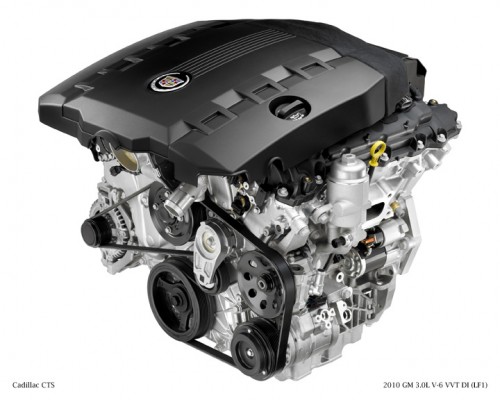There are a variety of options and features that can be ordered on the Cadillac CTS. However, there are the main branches for 2010 models for the CTS Sedan:
-
3.0L CTS Sedan
- Base RWD $35K or AWD $38K
- Luxury RWD $38K or AWD $41K
- Performance RWD $40K or AWD $42K
-
3.6L CTS Sedan
- Performance RWD $42K or AWD $43K
- Premium RWD $47K or AWD $49K
Gone are the heady days of 2003-2004 when one could buy the base model CTS for under $30K! So what do you get for the money today?
For simplicity the numbers to follow focus only on the rear wheel drive models:
3.0L CTS Sedan $35K:
- 270 hp 3.0L V6 VVT engine
- StabiliTrak electronic stability control system
- Premium steering
- Bose Sound System
- Luxury Model at $38K adds:
- Wood trim
- Bluetooth for phone interface
- Interior Ambient Lighting
- Performance Model at $40K adds:
- 18″ aluminum wheels with premium multi-coat painted finish
- Sport performance suspension system
- Adaptive Forward Lighting
3.6L Performance Model for $42K includes:
- 304 hp 3.6L V6 VVT engine
- 18″ aluminum wheels with premium multi-coat painted finish
- Sport performance suspension system
- Adaptive Forward Lighting
3.6L Premium Model for $47K includes:
- 304 hp 3.6L V6 VVT engine
- Pop-up Navigation
- UltraView Sunroof
- Keyless Access/Smart Remote Start
Fuel Economy – Constant
I want the sport suspension but…
If price is no object
For the extra $5K one would get standard on the Premium CTS Sedan (highlights):
- Interior ambient mood lighting
- Wood Trim
- Audio system with Navigation
- Ultrasonic rear parking
- Heated, Ventilated seats
- Ultraview Sunroof
- Keyless Access / Smart remote start
The Performance model gets summer tires; the Premium model gets all-season tires. The All-season tires give up a bit of dry grip but handle weather better.
All of these seem worthwhile for a fully optioned CTS, so if I were going $42K for the CTS Performance I would probably look for a way to move up to the $47K CTS Premium.
You have to pay to play…
Making room for the ATS
So my unsolicited recommendations for a CTS Sedan refresh for 2011 are:
-
3.0L CTS Sedan – I would eliminate the 3.0L in the 2011 CTS
-
3.6L 304 hp CTS V6 Sedan:
- Performance RWD $35K
- Premium RWD $40K
-
6.2L 425 hp CTS V8 Sedan
- Performance RWD $45K
-
Supercharged 6.2L 556 hp CTS-V
- Performance RWD $60K
This would put the CTS in the right value ranges so that any CTS one buys is a terrific value for the money.



